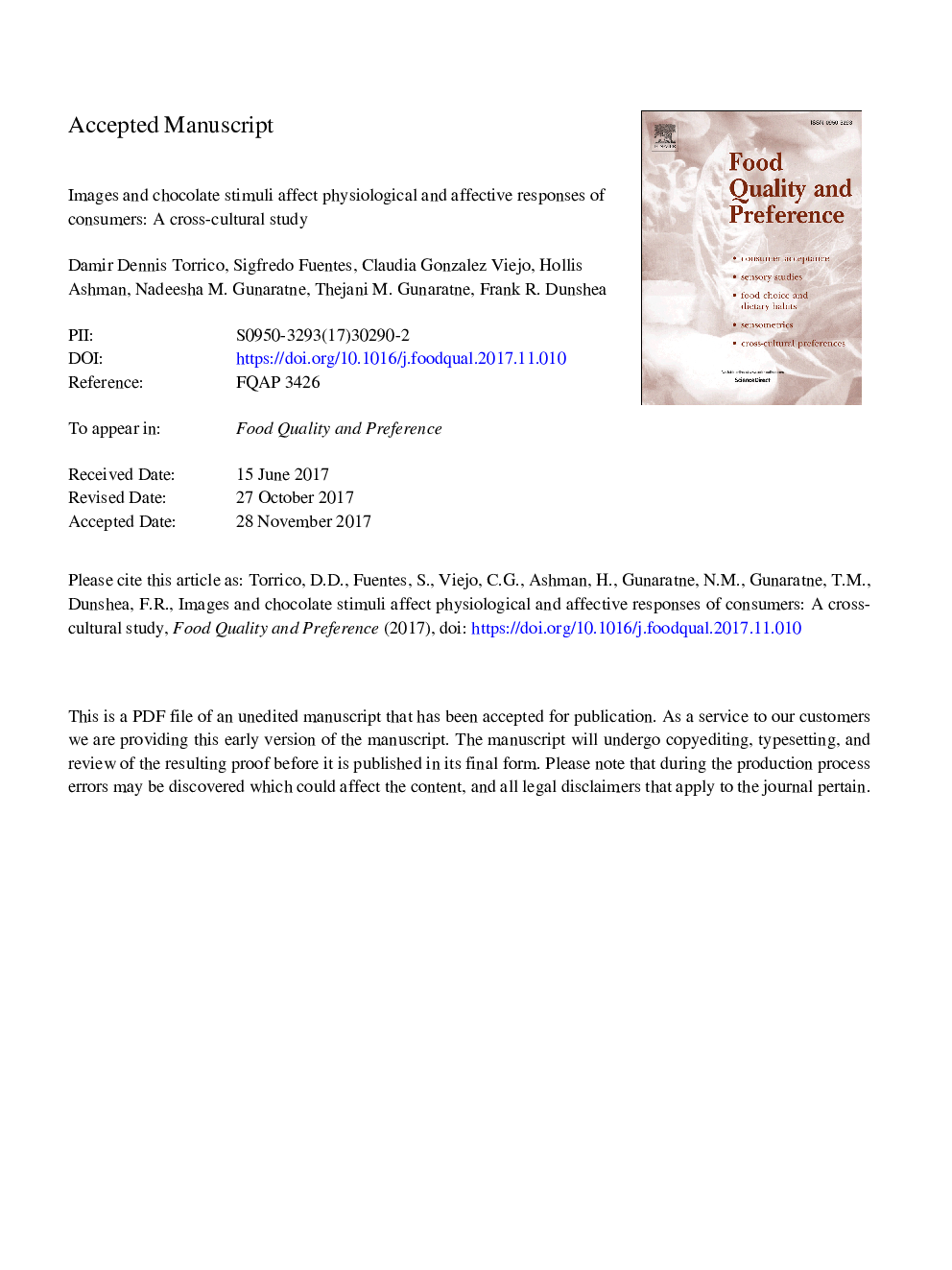| Article ID | Journal | Published Year | Pages | File Type |
|---|---|---|---|---|
| 8838539 | Food Quality and Preference | 2018 | 43 Pages |
Abstract
Sensory evaluation relies on explicit responses from consumers. Unconscious responses may complement the information regarding the emotional states of consumers. In this study, physiological, facial expression and sensory/emotional responses to different visual (images) and chocolate stimuli were evaluated using two groups (participants with Asian and Western backgrounds). Panellists (Nâ¯=â¯60; 60% Asian-background and 40% Western-background) evaluated 15 images (5-positive/5-neutral/5-negative) and 4 chocolate samples (milk/60%-cocoa/70%-cocoa/candy-inclusions). Consumers assessed their emotions (3-point scale) and liking (9-point scale). Non-invasive peripheral skin temperature (ST), heart rate (BPM), and facial expressions using FaceReader⢠(FR) were assessed. Western-background participants showed similar heart rate (55-59 vs. 54-59) and temperature (0.6-1.5â¯Â°C difference) compared to Asian-background participants for images and chocolate samples. BPM (54-59) was not different among stimuli. Consumer emotions (imagesâ¯=â¯â0.87 to 1.00 and chocolateâ¯=â¯0.27 to 0.60) and liking (chocolateâ¯=â¯5.20 to 6.33) were evaluated for both groups. For Asian-background participants, ST was positively correlated to FR-happy (râ¯=â¯0.45) and negatively correlated to FR-angry (râ¯=â¯â0.23) and FR-sad (râ¯=â¯â0.20). For Western-background participants, ST was positively correlated to FR-sad (râ¯=â¯0.23) and negatively correlated to FR-angry (râ¯=â¯â0.35). Cultural differences were found when assessing images based on sensory responses. These findings will be useful to better understand acceptability based on unconscious and emotional responses.
Keywords
Related Topics
Life Sciences
Agricultural and Biological Sciences
Food Science
Authors
Damir Dennis Torrico, Sigfredo Fuentes, Claudia Gonzalez Viejo, Hollis Ashman, Nadeesha M. Gunaratne, Thejani M. Gunaratne, Frank R. Dunshea,
